Uncover the versatility of the digital multimeter (DMM) with our easy-to-follow guide. Learn how this electronic device measures voltage, current, and resistance with precision. Whether you’re a DIY enthusiast or a professional, find out how to use the DMM for troubleshooting and solutions.
Explore the difference between an analog multimeter and a digital multimeter, and understand the advantages and disadvantages of using a digital multimeter. With its clear LCD display and sturdy build, the DMM ensures accurate readings every time, revolutionizing your electrical testing experience.
The incredible power of the digital multimeter! This handy tool might be small, but it packs a huge punch when it comes to testing and measuring electricity. Whether you’re fixing things around the house or working in a high-tech lab, a digital multimeter is your go-to gadget.
With its precise measurements and reliable performance, a digital multimeter can tackle all sorts of electrical tasks. Need to check the voltage in your car battery? No problem. Troubleshooting a circuit in your latest electronics project? The multimeter has got you covered.
From professionals in commercial settings to DIY enthusiasts at home, everyone can benefit from the versatility of a digital multimeter. It’s like having a superpower in your toolbox!
With its ability to unveil electrical mysteries with accuracy, the digital multimeter is a must-have for anyone working with electricity. Don’t underestimate its size – this compact device is a true ally in understanding and diagnosing electrical systems.
So whether you’re a seasoned electrician or just starting out, make sure you have a digital multimeter by your side. It’s the ultimate tool for unlocking the secrets of electricity!
What is a multimeter?
A multimeter or a multimeter or voltmeter, also called a VOM (volt-ohm-milliammeter), is an electronic measuring instrument that performs several measurement functions in one unit. A typical multimeter can be used to measure voltage, current and resistance and even to check for conductivity.
Analog multimeters uses a microammeter with a moving pointer to show the readings. Digital multimeters (DMM, DVOM), meanwhile, have a numeric display, and can also display a graphical bar indicating the measured value. Digital multimeters are now more common due to their lower cost and higher precision, although analog multimeters continue to be preferred in some instances, especially when one has to track a rapidly changing value.
A multimeter can be a hand-held device useful for basic fault finding and field service work, or a bench instrument which can calculate to a high degree of accuracy. Multimeters come with an array of features and at different price points.
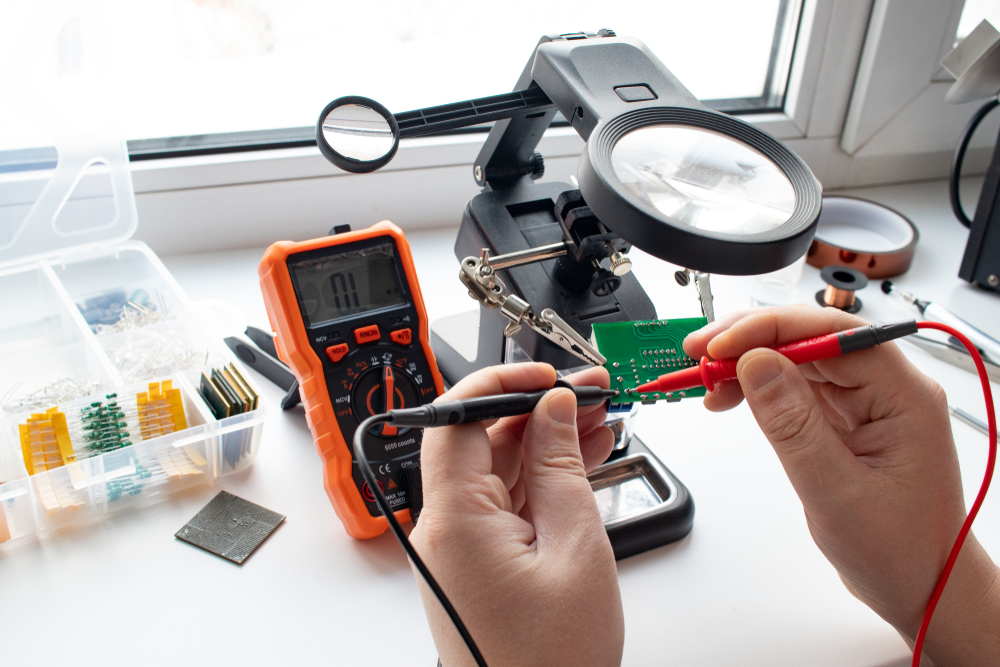
How To Use a Digital Multimeter
Using a digital multimeter (DMM) is essential for measuring various electrical parameters accurately. Here’s a basic guide on how to use one:
Method 1: Measuring Voltage
- Plug test leads / black lead into COM, red lead into V terminal.
- Set dial to V~ for AC, V⎓ for DC.
- Choose voltage range higher than expected.
- Touch probes to load/power source.
- Read voltage on screen.
Method 2: Testing Current
- Plug test leads / black lead into COM, red lead into A or mA.
- Turn dial to Amps.
- Break circuit, connect probes.
- Touch leads to free terminals, read current.
Method 3: Measuring Resistance
- Plug test leads / black lead into COM, red lead into Ω.
- Set dial to resistance scale.
- Place probes on resistor, read resistance.
Method 4: Testing Continuity
- Unplug device, remove batteries.
- Plug probes, set dial to continuity.
- Connect probes to component.
- Listen for beep indicating strong connection.
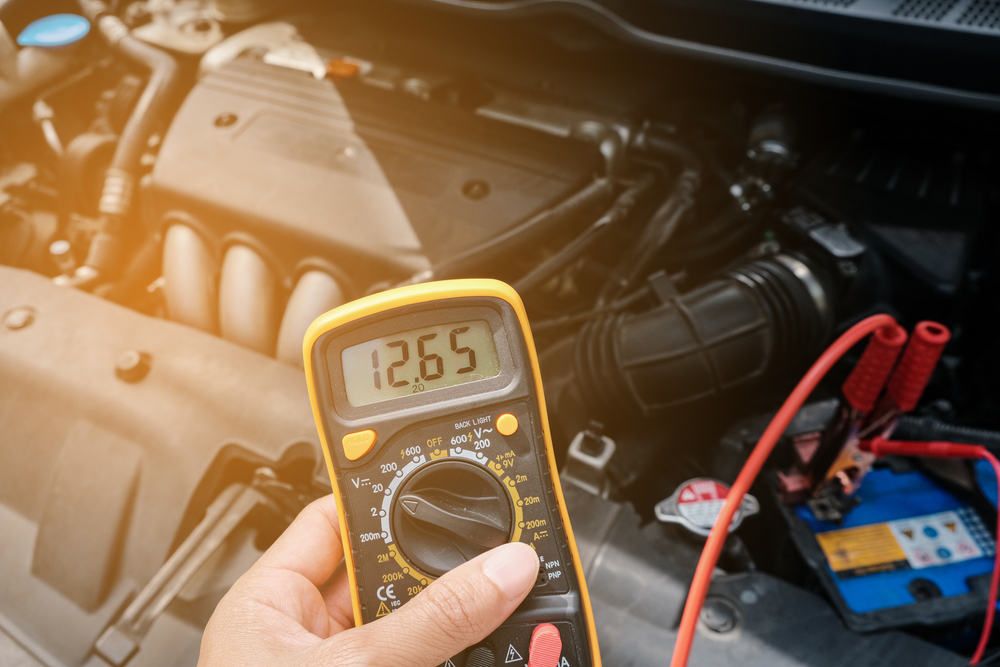
The Reason Why You Should Use Digital Multimeter
Functionality
The digital multimeter is your trusty sidekick in the world of electrical diagnostics, packed with tons of useful features. It does it all – checking if wires are connected, measuring different types of voltage (AC/DC), examining tiny electrical components like diodes, and assessing transistor HFE. No detail escapes its precise measurements and accuracy.
With the digital multimeter by your side, you’ve got everything you need to tackle electrical tasks with confidence. It’s like having a supercharged helper that never lets you down.
Reliability
When it comes to digital multimeters, reliable performance is essential. These gadgets are engineered to withstand the rigors of everyday use, featuring overcharge protection and a low battery indicator to ensure uninterrupted operation, even in challenging environments. With double insulation and an ergonomic design complete with a stand for optimal viewing angles, safety is paramount. Unlike analog meters, digital multimeters offer unparalleled accuracy, making them the go-to choice for professionals and DIY enthusiasts alike. Whether you’re working in a lab or out in the field, trust your digital multimeter to deliver precise measurements every time
The Significance of LCD Backlit Display
The digital multimeter comes with an LCD backlit display that offers clear visibility from different angles. This feature is super handy, especially in dark or tight spaces, making it easy to read measurements even in tough conditions. Plus, it has a data hold function, allowing users to capture and analyze readings with ease. So whether you’re working in dimly lit areas or cramped quarters, the digital multimeter has got you covered for hassle-free measurements.
DIY Testing Culture
The digital multimeter is a game-changer for anyone working with electricity. Whether you’re in a lab, classroom, workshop, or factory, this handy device is like having a superpower in your hands. Loved by both seasoned engineers and beginners, it’s incredibly versatile.
The latest version comes with upgraded test leads, capable of handling up to 1000 volts and 10 amps. This ensures that safety and reliability are always top-notch. That’s why savvy users always turn to the digital multimeter for their electrical work. Whether you’re testing circuits, troubleshooting issues, or diving into the DIY culture, this tool has you covered.
Safety
Durability and safety are at the heart of the digital multimeter’s design. With a robust rubber shell, this device can withstand splashes and bumps, ensuring it operates smoothly even in harsh conditions. Amps inputs are safeguarded by high-energy fuses, protecting against voltage transients and other electrical hazards. Plus, with insurance tube current input protection and a 12-month warranty, users can trust that their investment is secure. Whether you’re a seasoned pro or just starting out, the digital multimeter prioritizes safety and reliability, making it your trusted companion for all your electrical needs.
Versatility
The digital multimeter is incredibly versatile, fitting into your workflow seamlessly. You can hold it in your hand for quick diagnostics while on the move, or set it up on a fold-out stand for longer testing sessions. This device caters to different preferences perfectly. Its ergonomic design ensures comfort even during extended use, and its user-friendly interface makes operation a breeze, regardless of your expertise level.
Whether you’re dealing with sinusoidal or non-sinusoidal AC waveforms, the digital multimeter delivers accurate measurements every time. It can measure a wide range of parameters, making it suitable for various applications. Whether you’re a professional or a beginner, this versatile tool adapts to your needs with finesse.
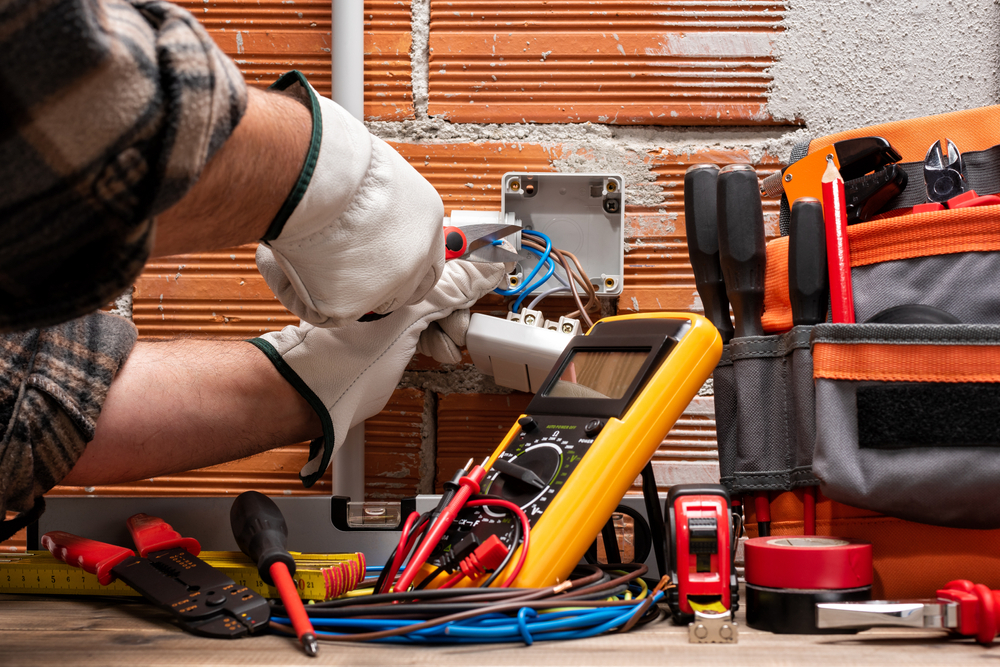
Disadvantages of Using a Digital Multimeter:
- Cost: Digital multimeters can be more expensive than analog counterparts, especially for high-end models with advanced features.
- Battery Dependence: DMMs require batteries for operation, and if the batteries run out, the meter becomes unusable until they are replaced.
- Resolution Limitation: DMMs may have a limited resolution for certain measurements compared to high-quality analog meters.
- Response Time: Analog meters respond more quickly to rapidly changing signals, whereas some DMMs might have a slight delay in displaying changing values.
- Susceptibility to Damage: Digital multimeters can be more sensitive to overvoltage or incorrect usage, potentially leading to damage.
- Learning Curve: Some users, especially those accustomed to analog meters, may find a learning curve in adapting to the digital interface.
- Inability to Visualize Trends: Analog meters provide a visual indication of changing values, allowing users to see trends, which may be lacking in digital displays
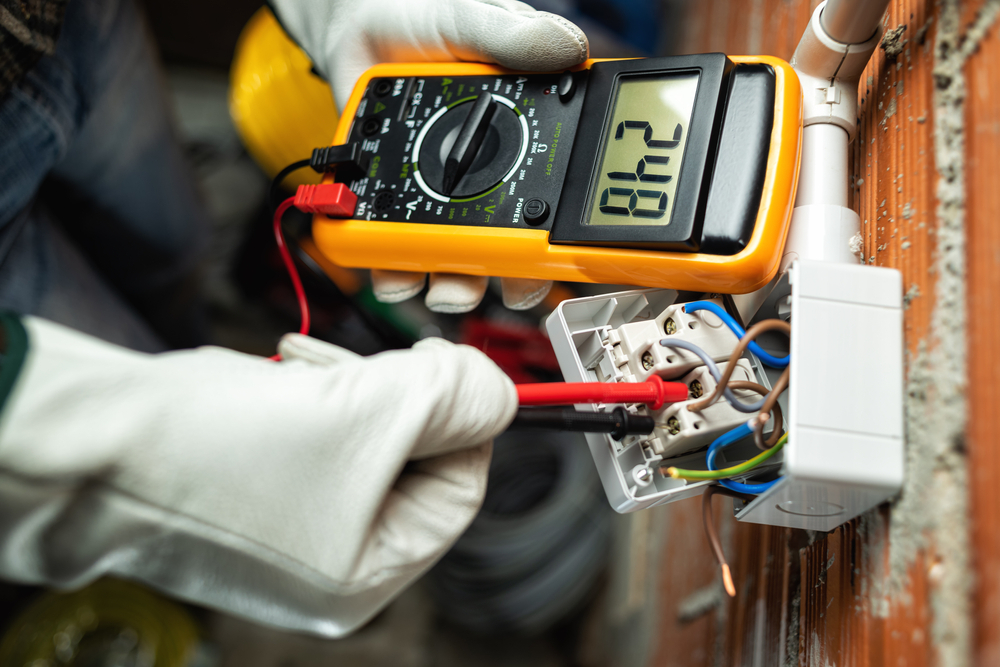
Difference between Analog Multimeter and Digital Multimeter
The following table compares and contrasts the various features of Analog and Digital Multimeters −
| Parameter | Analog Multimeter | Digital Multimeter |
| Definition | An analog multimeter is a multipurpose measuring instrument used to measure basic electrical quantities and shows the value of measuring quantity by the deflection of a pointer on a scale. | A multipurpose electronic measuring device used to measure various electrical quantities such as voltage, current, resistance, capacitance, etc. and shows the results in digital form using a digital display is known as digital multimeter. |
| Abbreviation | AMM is the abbreviation used for representing an analog multimeter. | DMM is the abbreviation used to denote digital multimeter. |
| Construction | Analog multimeter consists of a permanent magnet moving coil galvanometer. A pointer is attached to the moving coil. The pointer deflects on a scale to shows the readings. | Digital multimeter consists of various electronic circuits such as ADC, encoders, logic controller, digital display, etc. which are connected in a single unit to measure and show the different electrical quantities in digital form. |
| Method of reading | The analog multimeter shows the reading of measurement by the deflection of a pointer on a printed scale. | Digital multimeter shows the readings of measurements on a digital display in the form of digits. |
| Requirement of ADC | An analog multimeter does not require ADC or Analog to Digital Converter. | Digital multimeter requires an ADC. |
| Input resistance | The input resistance of an analog multimeter is variable which changes with the change in range. | The digital multimeter has constant input resistance for all ranges. |
| Accuracy | Analog multimeters are less accurate than DMM. This is mainly due to wrong pointer readings and parallax error. | Digital multimeter is the most accurate measuring instrument. |
| Range setting | In analog multimeter, a rotating knob is provided to select the range. | The Modern digital multimeters come with the auto-ranging feature. |
| Indication of reverse polarity | In analog multimeter, the pointer deflects to the left to indicate the reverse polarity. | Digital multimeter shows a negative signed value to indicate the reverse polarity. |
| Need of power supply | In an analog multimeter, there is no need of power supply for voltage and current measurement, but it is required for resistance measurement. | Digital multimeter requires power supply to start and perform all the measurements. |
| Frequency range | The maximum permissible frequency range for an analog multimeter is low. | The maximum permissible frequency range for a digital multimeter is relatively higher. |
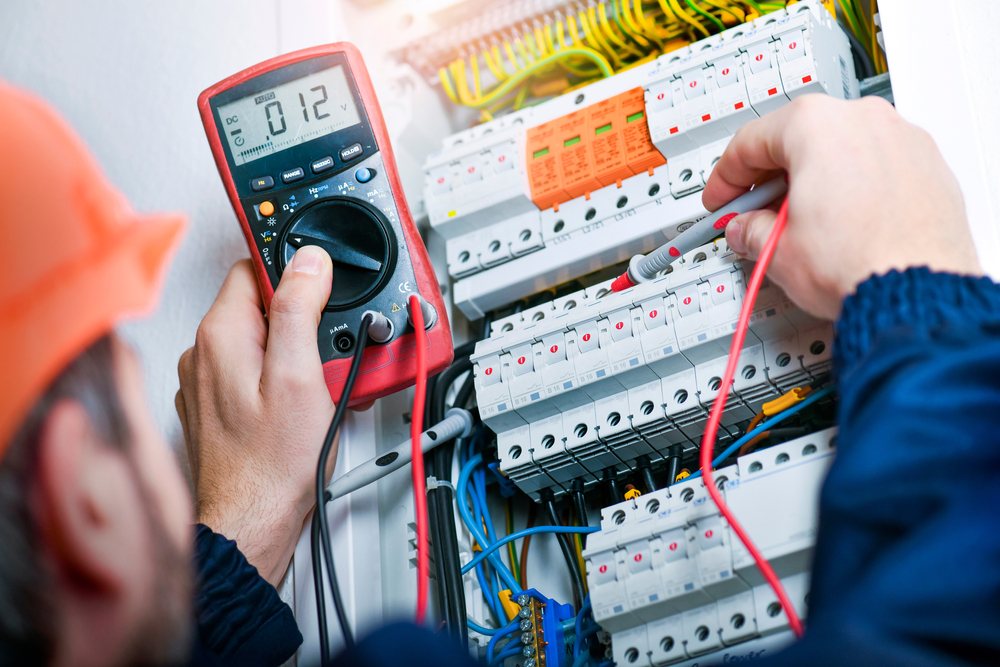
Conclusion
The digital multimeter is like a trusty guide, always there to help us with its accuracy and reliability. Every measurement it takes, every circuit it analyzes, brings us closer to understanding the electrical world. With this tool by our side, we can explore confidently and clearly.
In the world of technology, the digital multimeter stands out for its excellence, enhancing our understanding of electricity with its precision and reliability. As we say goodbye to this helpful guide, let’s remember the knowledge we’ve gained and continue to value precision as we strive for excellence.
Frequently Asked Questions
You can measure various electrical quantities with a digital multimeter, including:
- Voltage: AC and DC voltage levels.
- Current: AC and DC current flow.
- Resistance: The resistance of a component or circuit.
- Continuity: Checks if a circuit is complete.
- Conductivity: Measures how conductive a material is.
- Capacitance: The ability of a component to store charge.
Yes, digital multimeters are user-friendly and suitable for beginners. They often come with clear instructions and intuitive interfaces, making them easy to use for basic electrical measurements.
Yes, digital multimeters are commonly used for troubleshooting electrical problems. They can help identify issues such as faulty components, open circuits, short circuits, and incorrect voltage levels

